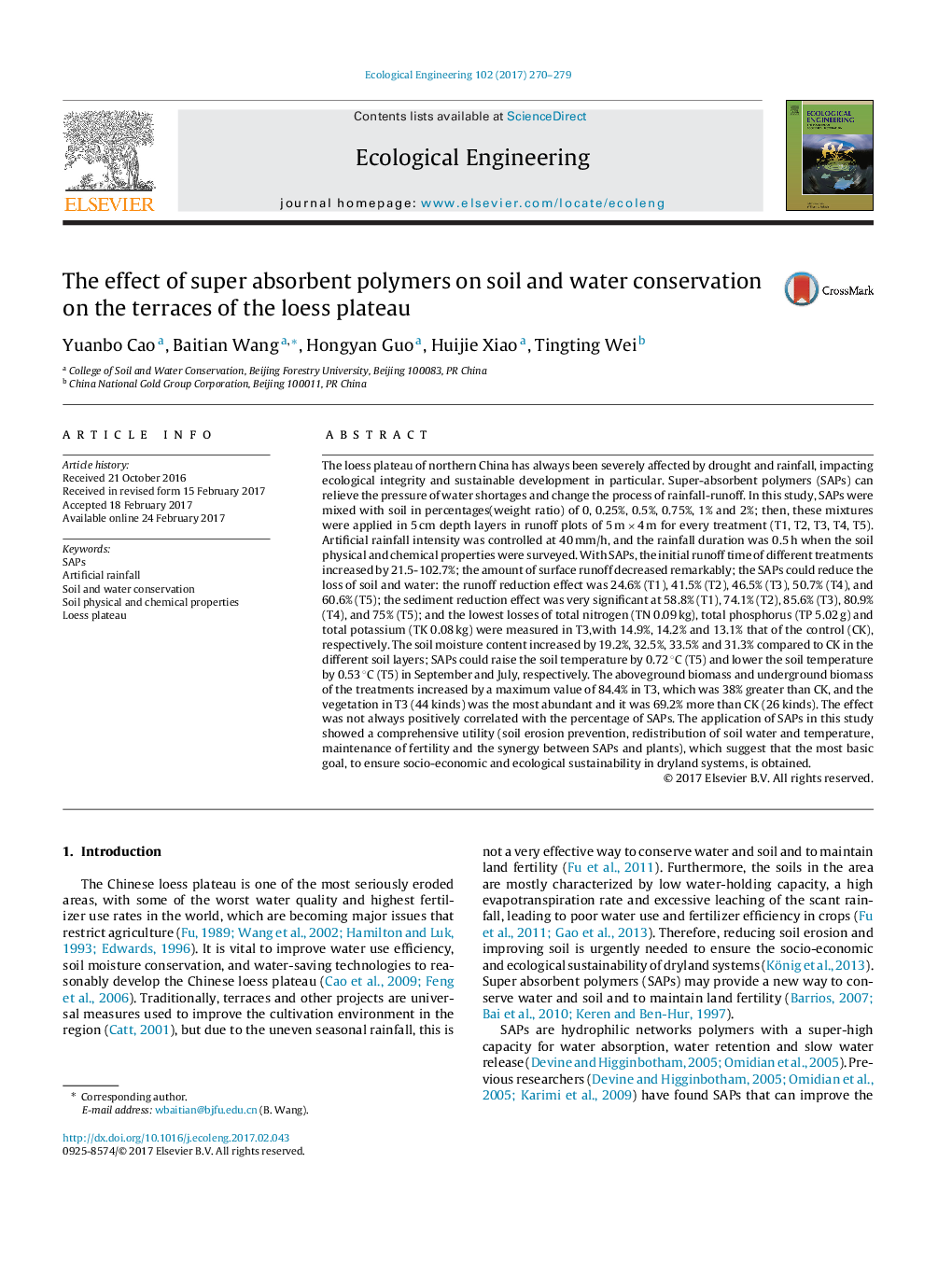| کد مقاله | کد نشریه | سال انتشار | مقاله انگلیسی | نسخه تمام متن |
|---|---|---|---|---|
| 5743771 | 1617997 | 2017 | 10 صفحه PDF | دانلود رایگان |
The loess plateau of northern China has always been severely affected by drought and rainfall, impacting ecological integrity and sustainable development in particular. Super-absorbent polymers (SAPs) can relieve the pressure of water shortages and change the process of rainfall-runoff. In this study, SAPs were mixed with soil in percentages(weight ratio) of 0, 0.25%, 0.5%, 0.75%, 1% and 2%; then, these mixtures were applied in 5 cm depth layers in runoff plots of 5 m Ã 4 m for every treatment (T1, T2, T3, T4, T5). Artificial rainfall intensity was controlled at 40 mm/h, and the rainfall duration was 0.5 h when the soil physical and chemical properties were surveyed. With SAPs, the initial runoff time of different treatments increased by 21.5-102.7%; the amount of surface runoff decreased remarkably; the SAPs could reduce the loss of soil and water: the runoff reduction effect was 24.6% (T1), 41.5% (T2), 46.5% (T3), 50.7% (T4), and 60.6% (T5); the sediment reduction effect was very significant at 58.8% (T1), 74.1% (T2), 85.6% (T3), 80.9% (T4), and 75% (T5); and the lowest losses of total nitrogen (TN 0.09 kg), total phosphorus (TP 5.02 g) and total potassium (TK 0.08 kg) were measured in T3,with 14.9%, 14.2% and 13.1% that of the control (CK), respectively. The soil moisture content increased by 19.2%, 32.5%, 33.5% and 31.3% compared to CK in the different soil layers; SAPs could raise the soil temperature by 0.72 °C (T5) and lower the soil temperature by 0.53 °C (T5) in September and July, respectively. The aboveground biomass and underground biomass of the treatments increased by a maximum value of 84.4% in T3, which was 38% greater than CK, and the vegetation in T3 (44 kinds) was the most abundant and it was 69.2% more than CK (26 kinds). The effect was not always positively correlated with the percentage of SAPs. The application of SAPs in this study showed a comprehensive utility (soil erosion prevention, redistribution of soil water and temperature, maintenance of fertility and the synergy between SAPs and plants), which suggest that the most basic goal, to ensure socio-economic and ecological sustainability in dryland systems, is obtained.
Journal: Ecological Engineering - Volume 102, May 2017, Pages 270-279
